Student Notable
Interaction Award
Core77 Design Awards 2017
superbleeper: play, music & math
The Opportunity
Can we make learning math fun and creative? Can we make math tangible and embodied? Can we mix "subjects" in order to provide a richer, more creative and thus, more engaging experience? And finally, can we make children reflect on what they are doing when learning?
Inheriting from the Montessori tradition, Superbleeper combines open, exploratory play with creativity. It is also open for guided activities with teachers and parents. It is a proposal for mixing subjects and disciplines fostering creativity. It tries to engage all senses in order to achieve an embodied experience of learning. It is all about visualizing, touching, hearing, thinking and creating: body and soul working together.
The declining interest of many students in math needs to be addressed in a creative and fun experience. With this project, I tried to integrate the latest research about learning and play in a prototype that could be tested in real life. Superbleeper idea of learning is based on situated learning and embodied cognition.
Companies and organizations are going through a deep process of digitization. Superbleeper poses a question about how should this process take place in the education system. The question is: Do we want our kids to grow exploring a screen or exploring the world?
The solution
Superbleeper is an electronic music instrument that is played using math concepts. It invites 3-6 year old children to play with the math they have to understand at that age. This math foundation for the youngest kids is about measurement, shape, patterns, time, change, quantity, sets, number sense, proportions and order. The user tests that I did, show that (electronic) music can be a way to embody and enjoy the use of math concepts in a creative way.
Superbleeper is a system of wooden blocks that maps music concepts (tone, duration, waveform) to tangible tokens. For example, one block is a C, two blocks correspond to D, three to E, etc. and the width of the blocks represents the duration.
Children can place blocks or combinations of blocks on the sides of the Superbleeper cube and the corresponding sound is played. The duration, pitch, timbre and the scale correspond to the physical properties of the wooden block attached.
Visual feedback about the numerical properties of that sound is also displayed on that side of the cube. A matrix of LED's lights up with the color of the wooden sound-block inserted on that side. The number of rows lit up in the matrix corresponds to the number of blocks attached (C, D, E, etc.) The number of columns corresponds to the duration of the sound (and corresponding width of the blocks) The box plays the blocks of each side following a sequential order creating a rhythmic pattern. The blocks can be changed in real time.
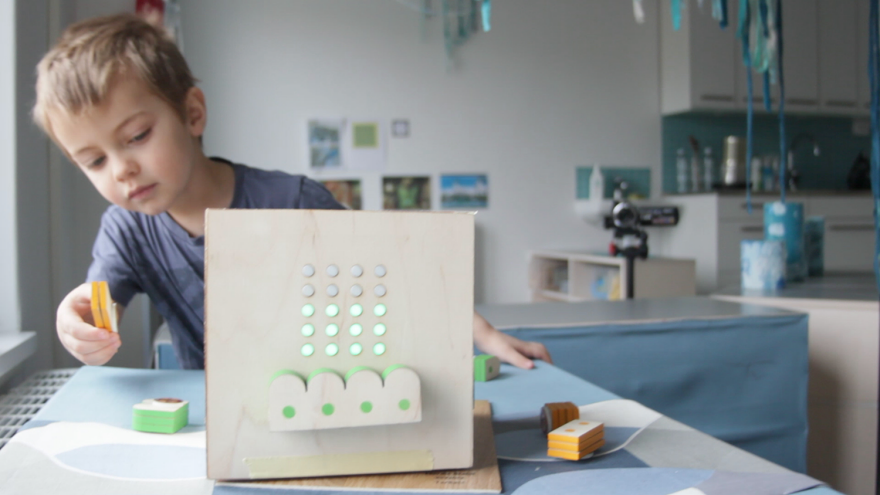
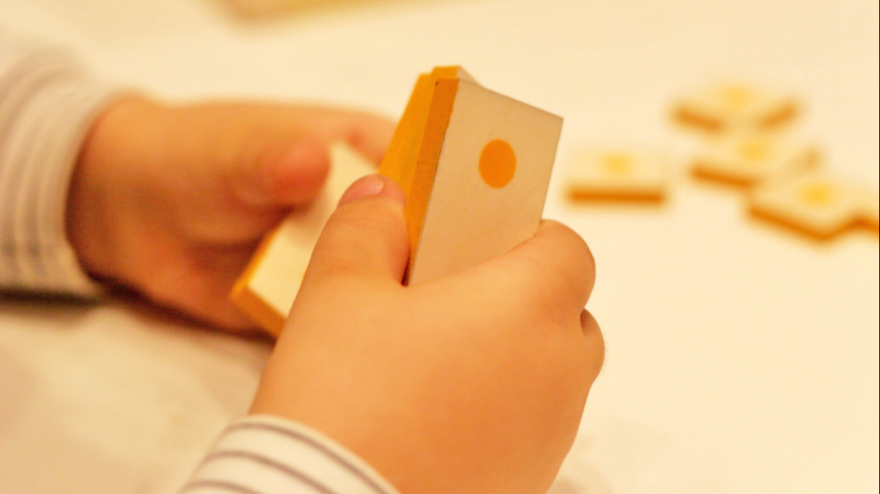

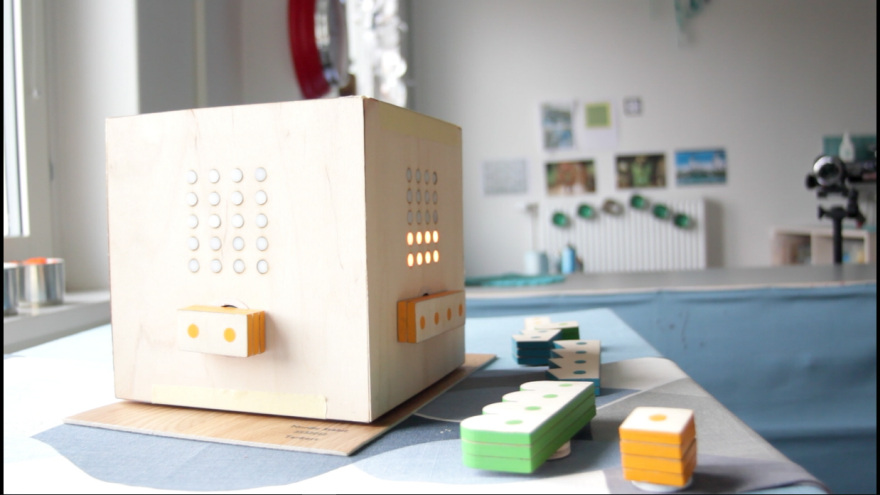
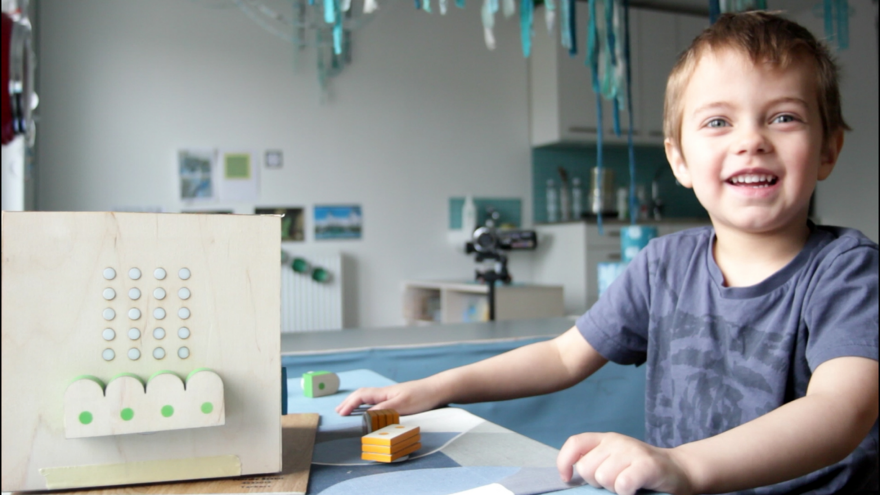
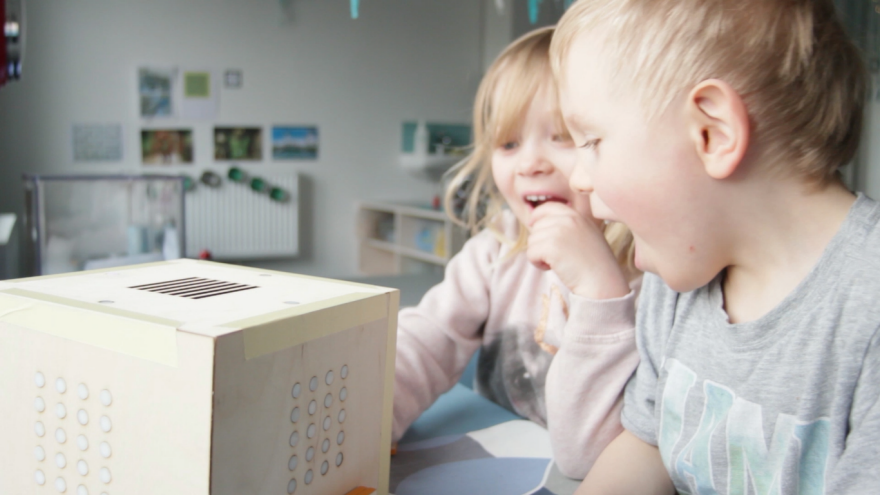
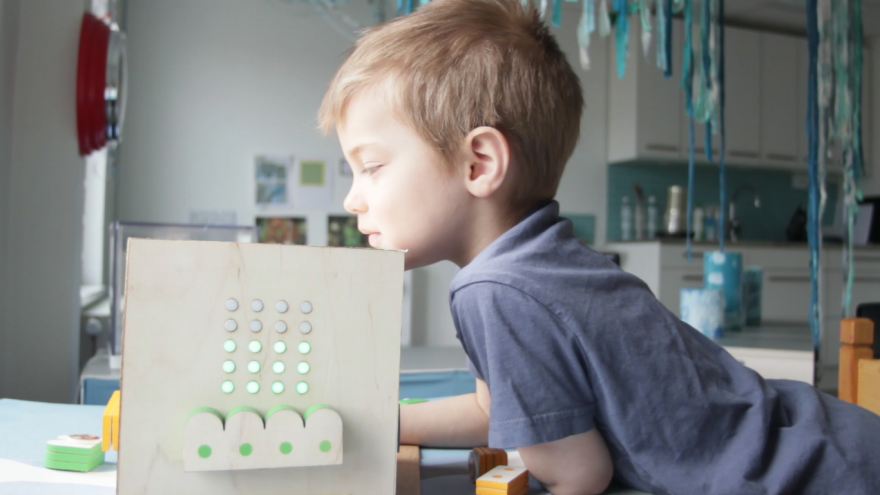

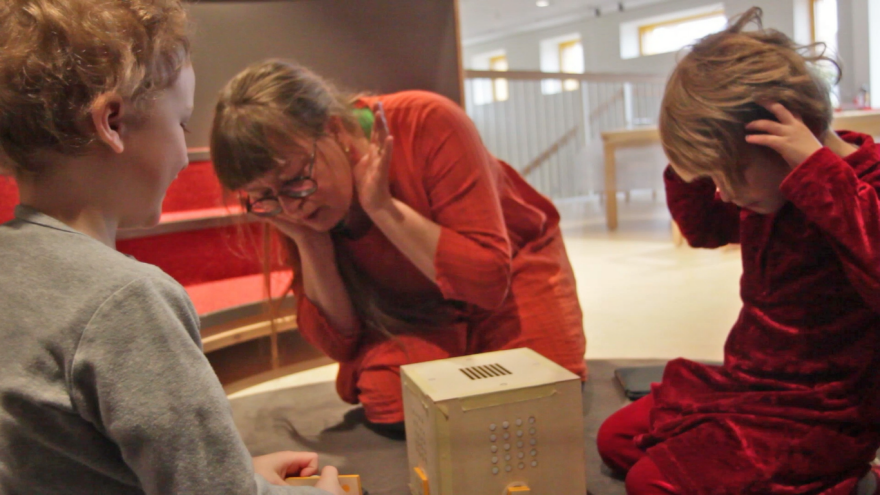
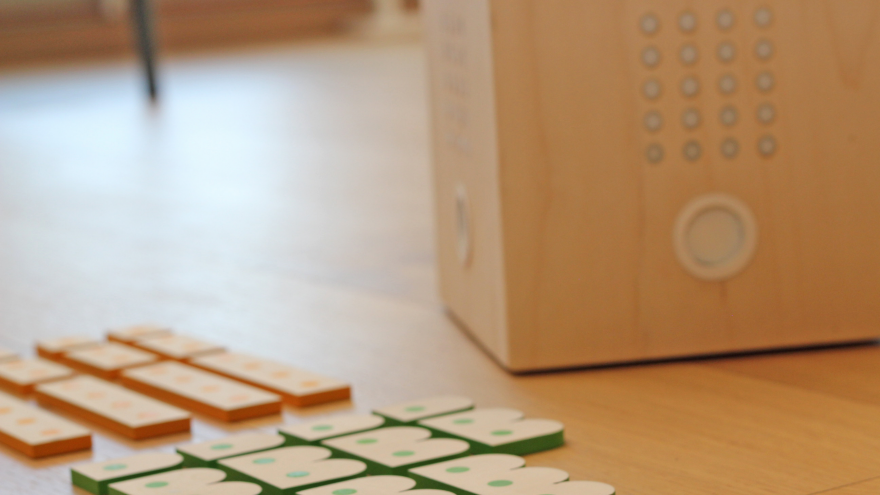
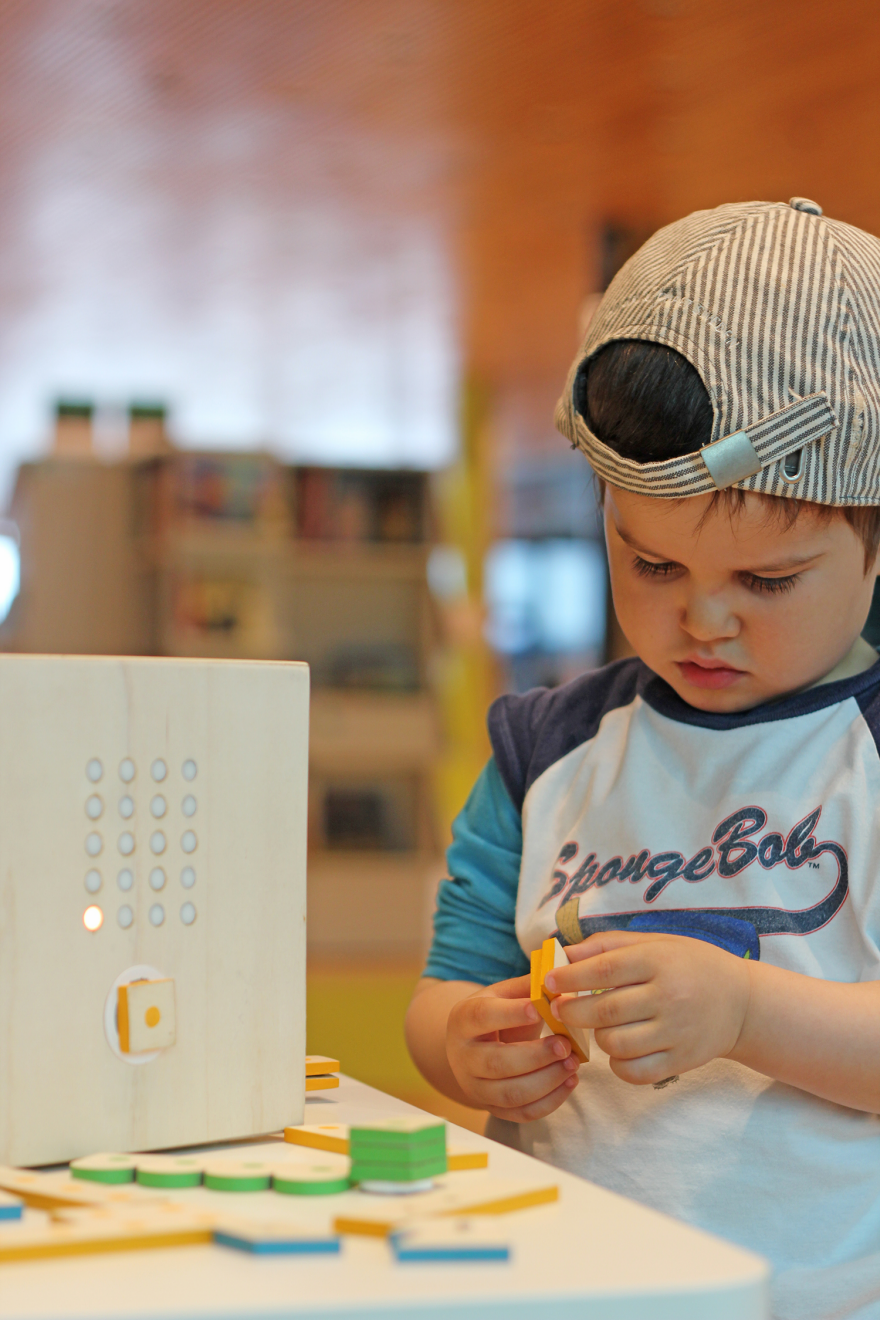
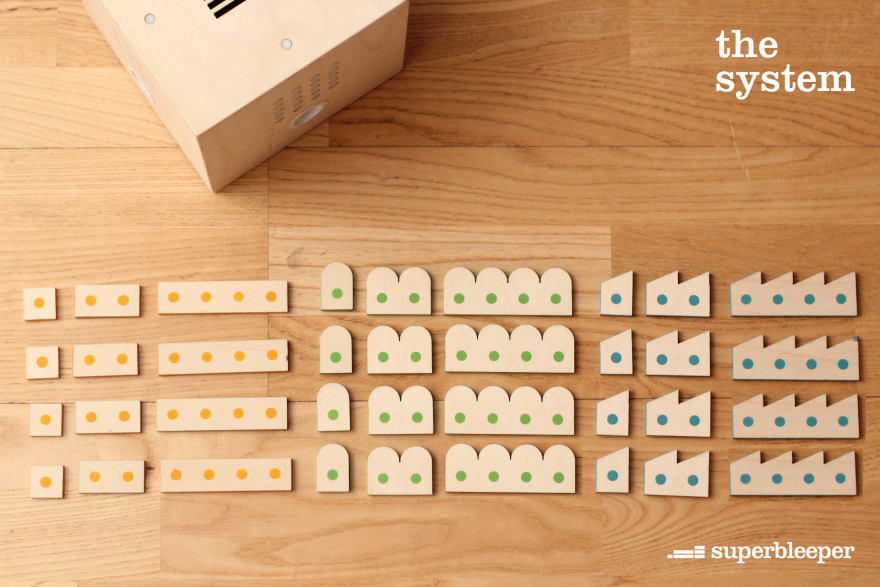
Patterns & Maths
Mathematicians seek out patterns.
The kindergarden curriculum establishes that children between 3 and 6 should "develop their understanding of space, shapes, location and direction, and the basic properties of sets, quantity, order and number concepts, also for measurement, time and change."
Superbleeper tries to make children work on all those concepts in a playful and creative way; through music.
width = duration
The different width of the tokens corresponds to the proportions of the duration of the whole, half and quarter notes.
height = pitch
Adding blocks on top of each other creates a higher set of blocks that corresponds to a higher pitch sound. Subtracting blocks creates a lower set of blocks and, consequently, a lower sound.
shape = timbre
The shape of the tokens generates different timbres in the sound. These shapes are mapped to different electronic waveshapes: sine, ramp and square waveforms.
color = scale
The color of the tokens is mapped to the scale of the notes that will be played. The system uses pentatonic scale for simplicity.
Sets, order, quantity, structure, change...
In this project music is understood as a sequence (ordered set) of notes.
When children place tokens on the sides of the box they are adding elements to the sequence in a specific order.
Changing tokens changes the sequence. The repetition of the sequence in time creates patterns of shapes, sounds and lights.
Notes are treated as a subset of sounds with a pitch and duration (time).
The number of circles (amount, quantity) in the tokens represents the width and the duration of the block and sound respectively. They are also the number of lights that will light up.
User tests
Watch a short video with some user-tests fragments.
Our main goal was to be able to test the solution with real children in real contexts. A working prototype was developed to test the reaction of kids as users. Tests were performed with more than 12 children between 4 and 6 years old in three different contexts:
• home/private environment
• preschool with educator assistance
• preschool without any assistance
Children get really excited when first see the instrument. Almost all the tests show children talking about numbers and shapes and counting. Most children make connections between the size and the shape of the block and the sound and the lights on the box. They clearly see the connection between width and duration. It is not so obvious the connection between height and pitch.
Some children were able to anticipate the number of lights that were going to light up before placing the block of wood. One of the kids, proud of his composition, repeated six times that "it is a song". He followed the lights (sequence) moving around the cube and followed the top lights (order) with his eyes.
The tests also show that the tool can be used as a more guided activity device for teachers, parents and educators. In one exercise, teachers started to create exercises like giving a certain amount of "dots" to kids. Then, children had to place that total number of dots (using the tokens) divided by 4, 3 or 2 sides. For example, every child starts with 12 dots. First they have to find tokens that add up to 12 dots and then they have to place those tokens on 4 sides. Many variations of the same exercise can be created (using three or two sides) and many rhythms can be played. Teachers also made children think about the height of the tokens and the height of the sound.
More
Please do take a look at the student project pdf for more details about the Research Through Design process, the Ethnographic Design and the Participatory Design methods.